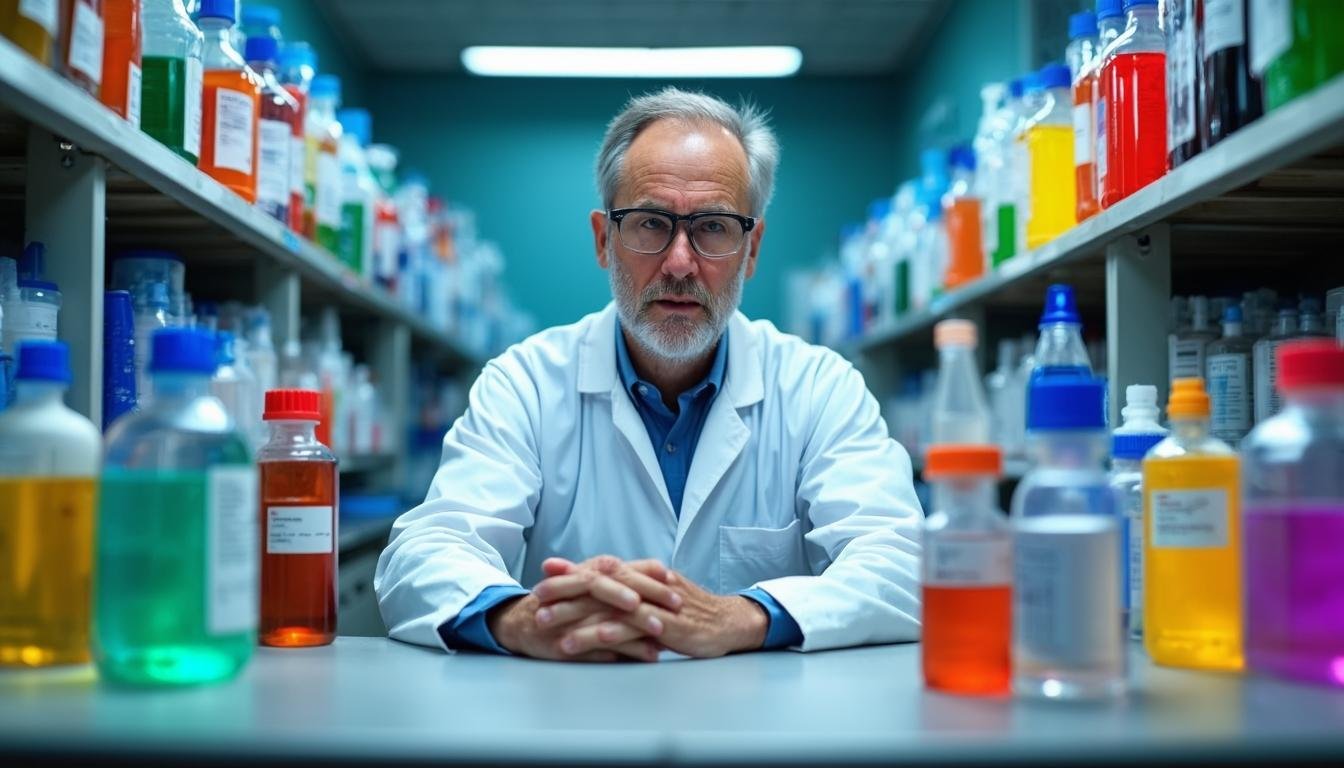Abstract
This article explores the transformative role of chemical innovations in modern laboratories, focusing on technologies like automation, advanced detection methods, and smart materials. Through personal anecdotes and industry insights, it examines how these advancements are reshaping research practices, addressing challenges such as efficiency and sustainability. The piece also reflects on the broader implications of these technologies, including their costs, training requirements, and potential future developments. By blending professional analysis with personal experience, the article offers a nuanced perspective on the evolving landscape of chemical research.
Table of Contents
Personal Experience with Innovations
Types of Chemical Innovations
Modern laboratories are buzzing with innovations that are redefining how we conduct chemical research. Automation, for starters, has been a game-changer. I remember when we first introduced robotic pipetting systems into my lab. The precision and speed were mind-blowing. Before, we spent hours manually transferring liquids, and the margin for error was high. Now, with these systems, the process is almost error-free, and we can focus on more complex tasks. But it’s not just about efficiency; it’s also about consistency. Human error is a thing of the past, at least in terms of liquid handling.
Then there are the novel detection methods. Techniques like mass spectrometry and Raman spectroscopy have revolutionized analytical chemistry. I recall a project where we needed to identify trace contaminants in a sample. Traditional methods were time-consuming and often inconclusive. But when we switched to a high-resolution mass spectrometer, the results were crystal clear. The ability to detect and quantify substances at parts-per-billion levels opened up new avenues for research. It’s these tools that push the boundaries of what’s possible.
Smart materials are another frontier. These materials can respond to external stimuli, making them incredibly useful for drug delivery and sensor applications. I once worked on a project using shape-memory polymers that could release a drug in response to temperature changes. The potential was immense, but the development was fraught with challenges. The materials had to be biocompatible, stable, and responsive. It took several iterations, but when it finally worked, it was a eureka moment. These innovations are not just theoretical; they have real-world applications that could change medicine and materials science forever.
Personal Experience with Innovations
Let me share a specific case from my time at a pharmaceutical research lab. We were working on a new drug formulation, and one of the biggest hurdles was ensuring controlled release. Traditional methods involved bulky, non-responsive matrices. We decided to try out a smart hydrogel material that could release the drug in a pH-sensitive manner. The idea was promising, but the execution was a nightmare. The first few batches failed miserably—the hydrogels either disintegrated too quickly or didn’t release the drug at all.
It was a frustrating period. We spent weeks tweaking the formulation, adjusting the cross-linking agents, and testing different polymer ratios. But then, we had a breakthrough. By optimizing the polymer network, we created a hydrogel that maintained its structure and released the drug in a controlled manner. The results were phenomenal. The drug efficacy improved, and we had a formulation that could compete with existing products. It was a humbling experience. Innovation isn’t just about having the right tools; it’s about perseverance and adaptability.

Another memorable project involved using an automated high-throughput screening system. We were testing thousands of compounds for potential antimicrobial activity. Manually screening each compound would have taken months. With the automated system, we could process hundreds of samples in a single day. The data was overwhelming at first, but the insights we gained were invaluable. We identified several promising candidates that would have been missed otherwise. It’s these technologies that make large-scale drug discovery feasible.
Industry Trends and Impacts
The push for efficiency and sustainability is driving a lot of innovation in the chemical industry. Companies are investing heavily in automation to reduce labor costs and improve productivity. For instance, a client of mine, a mid-sized chemical manufacturer, implemented an automated synthesis system and saw a 30% increase in output within the first year. The system also reduced waste by optimizing reaction conditions, which was a win-win.
Environmental concerns are also shaping the industry. Green chemistry is no longer a niche field; it’s becoming mainstream. I’ve seen labs adopt solvent-free reactions, biodegradable catalysts, and energy-efficient processes. These changes aren’t just about compliance; they’re about responsibility. The chemical industry has a reputation for being resource-intensive, and it’s high time we changed that.
Another trend is the integration of artificial intelligence (AI) into chemical research. AI algorithms can predict reaction outcomes, optimize synthetic routes, and even design new molecules. A company called Zofaith Chemicals has been using AI to accelerate drug discovery. They claim to reduce the time it takes to identify a lead compound by half. While the technology is still evolving, the potential is undeniable. It’s a testament to how interdisciplinary approaches can drive progress.
Challenges and Opportunities
Despite the benefits, there are significant challenges to adopting these innovations. Cost is a major one. High-end instruments like mass spectrometers and robotic systems can cost hundreds of thousands of dollars. For smaller labs, this can be a barrier. Training is another issue. Many researchers are not familiar with the latest technologies, and there’s a shortage of skilled technicians. I’ve seen labs invest in automation only to struggle with maintenance and operation.
However, the opportunities far outweigh the challenges. The chemical industry is evolving, and those who adapt will thrive. For instance, a startup I know, Synthera Inc., developed a compact, affordable Raman spectrometer that is revolutionizing on-site analysis. It’s lightweight, easy to use, and provides high-quality results. This democratization of technology is making advanced analysis accessible to more researchers.
Collaboration is also key. No single lab can afford all the technologies needed for cutting-edge research. Partnerships between academia and industry can help bridge the gap. I’ve been part of several collaborative projects where we leveraged each other’s expertise and resources. It’s these collaborations that lead to breakthroughs that wouldn’t be possible otherwise.
Future Outlook
Looking ahead, the future of chemical innovation looks bright. I’m particularly excited about the potential of quantum computing in chemistry. Quantum computers could simulate molecular interactions with unprecedented accuracy, accelerating drug discovery and materials design. While we’re still in the early stages, the possibilities are endless.
Another area to watch is biodegradable chemistry. With climate change and pollution on the rise, there’s a growing demand for sustainable alternatives. I’ve seen labs develop biodegradable polymers and solvents that could replace traditional, harmful chemicals. These innovations could have a profound impact on industries ranging from packaging to pharmaceuticals.
Personalized medicine is also poised to revolutionize healthcare. By combining chemical innovations with genetic data, researchers can develop tailored treatments for individual patients. I’ve been involved in a project where we used smart nanoparticles to deliver drugs directly to cancer cells. The results were promising, and we’re just scratching the surface of what’s possible.
Conclusion
Chemical innovations are reshaping the landscape of modern laboratories, offering unprecedented opportunities for research and discovery. From automation and advanced detection methods to smart materials and AI-driven research, these technologies are making science more efficient, sustainable, and accessible. While challenges such as cost and training persist, the potential benefits are immense. As a researcher, I’ve seen firsthand how these innovations can transform a lab’s capabilities. The future of chemistry is bright, and it’s up to us to harness these tools to solve some of the world’s most pressing problems.
Keywords: chemical innovations, modern laboratories, automation, smart materials, AI in chemistry, green chemistry, drug discovery, sustainable chemistry
For more information on chemical innovations and how they can benefit your lab, please contact us at boss@zofaith.com or call us at (86) 15725163518.











